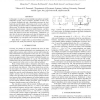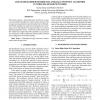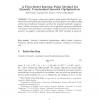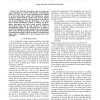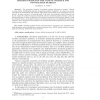140
click to vote
SIGMETRICS
2011
ACM
14 years 3 months ago
2011
ACM
Cloud computing, social networking and information networks (for search, news feeds, etc) are driving interest in the deployment of large data centers. TCP is the dominant Layer 3...
125
Voted
GECCO
2011
Springer
14 years 4 months ago
2011
Springer
This paper introduces mirrored sampling into evolution strategies (ESs) with weighted multi-recombination. Two further heuristics are introduced: pairwise selection selects at mos...
ICASSP
2011
IEEE
14 years 4 months ago
2011
IEEE
Proportionate-type affine projection algorithms (PAPAs) are very attractive choices for echo cancellation. These algorithms combine the good features (convergence and tracking) o...
109
click to vote
ICASSP
2011
IEEE
14 years 4 months ago
2011
IEEE
In this paper, we analyze a general multiple-microphone and singleloudspeaker system, where an adaptive algorithm is used to cancel acoustic feedback/echo and a beamformer process...
114
Voted
CORR
2011
Springer
14 years 7 months ago
2011
Springer
—Dual descent methods are commonly used to solve network optimization problems because their implementation can be distributed through the network. However, their convergence rat...
141
Voted
TSP
2010
14 years 7 months ago
2010
Distributed averaging describes a class of network algorithms for the decentralized computation of aggregate statistics. Initially, each node has a scalar data value, and the goal...
123
Voted
EJASP
2010
14 years 7 months ago
2010
This paper presents a linear high-order distributed average consensus (DAC) algorithm for wireless sensor networks. The average consensus property and convergence rate of the high...
133
Voted
MP
2011
14 years 7 months ago
2011
Abstract: We propose a first-order interior-point method for linearly constrained smooth optimization that unifies and extends first-order affine-scaling method and replicator d...
125
click to vote
CDC
2010
IEEE
14 years 7 months ago
2010
IEEE
Abstract-- We study the convergence rate of average consensus algorithms in networks with stochastic communication failures. We show how the system dynamics can be modeled by a dis...
112
Voted
CDC
2010
IEEE
14 years 7 months ago
2010
IEEE
The asymptotic behavior of stochastic gradient algorithms is studied. Relying on some results of differential geometry (Lojasiewicz gradient inequality), the almost sure pointconve...

